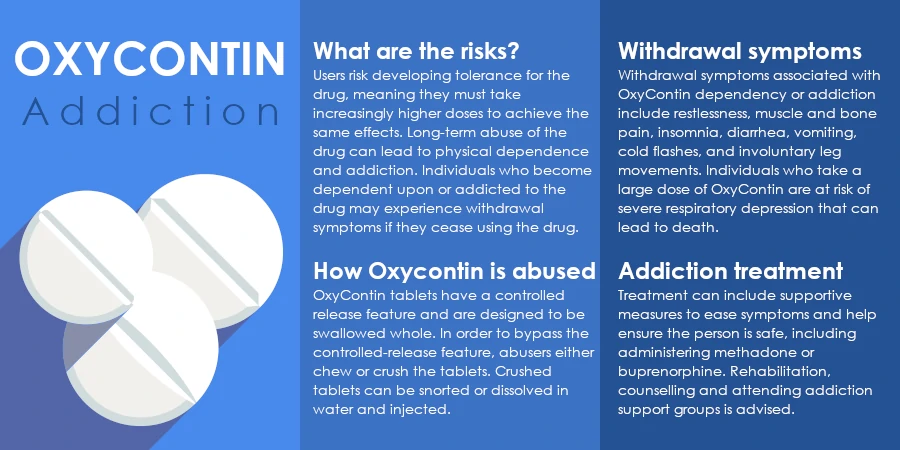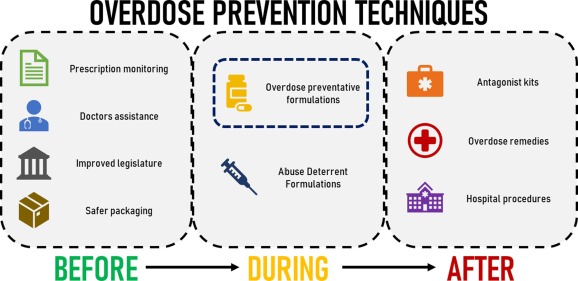OxyContin is a brand name for extended-release oxycodone, a powerful opioid medication prescribed for the management of severe, around-the-clock pain. As a controlled substance with significant risks, including addiction and overdose, understanding OxyContin’s proper use, effects, and alternatives is crucial for patients and caregivers. This comprehensive guide examines what OxyContin is, how it works, its potential dangers, and safer approaches to pain management.

OxyContin tablets are designed for extended-release pain relief over 12 hours
OxyContin is a brand-name prescription medication containing oxycodone, a semi-synthetic opioid derived from the opium poppy. Unlike immediate-release oxycodone formulations, OxyContin is specifically designed to release the medication slowly over 12 hours, providing extended pain relief for patients with severe, persistent pain.
As a Schedule II controlled substance, OxyContin has legitimate medical uses but also carries a high potential for abuse and dependence. It works by binding to opioid receptors in the brain, spinal cord, and other areas of the body, changing how your brain perceives and responds to pain signals.
OxyContin should only be used under close medical supervision. Never purchase OxyContin online without a valid prescription from your doctor. Illegally obtained OxyContin may be counterfeit, contaminated, or incorrectly dosed, posing serious health risks including overdose and death.
OxyContin was developed by Purdue Pharma, a pharmaceutical company founded by the Sackler family. The medication received FDA approval in 1995 and was marketed as a revolutionary pain management solution with a lower risk of addiction than other opioids due to its extended-release formulation.

Timeline of OxyContin’s development, marketing, and subsequent controversy
The original purpose of OxyContin was to provide effective pain relief for patients suffering from severe chronic pain while reducing the need for frequent dosing. The extended-release mechanism was designed to maintain steady blood levels of oxycodone over 12 hours, potentially improving quality of life for patients with persistent pain conditions.
Purdue Pharma aggressively marketed OxyContin to physicians, emphasizing its 12-hour duration and downplaying addiction risks. This marketing strategy, combined with liberal prescribing practices, contributed to widespread availability and misuse of the medication. By the early 2000s, OxyContin had become a focal point in the growing opioid epidemic in the United States.
In 2007, Purdue Pharma and three executives pleaded guilty to criminal charges of misbranding OxyContin by claiming it was less addictive and less subject to abuse than other opioids. The company paid $634 million in fines. In 2010, Purdue reformulated OxyContin with abuse-deterrent properties to make the tablets harder to crush or dissolve.
In 2020, Purdue Pharma pleaded guilty to federal criminal charges related to its role in the opioid crisis and agreed to an $8.3 billion settlement. The company filed for bankruptcy, and ongoing litigation continues to address the impact of OxyContin on public health.
OxyContin is prescribed for the management of pain severe enough to require daily, around-the-clock, long-term opioid treatment when other pain management options are inadequate. It is not intended for as-needed pain relief or for mild to moderate pain that can be managed with other medications.

Proper pain management requires thorough discussion with healthcare providers
OxyContin is typically reserved for patients who:
OxyContin should only be considered after thorough evaluation by a healthcare provider. Never self-diagnose or attempt to obtain this medication without proper medical supervision.
Like all opioid medications, OxyContin can cause a range of side effects from mild discomfort to life-threatening complications. Understanding these potential effects is crucial for patients and caregivers.

Common and serious side effects associated with OxyContin use
OxyContin can cause life-threatening respiratory depression (dangerously slowed breathing), especially during the first 72 hours of treatment or after a dose increase. This risk is higher in elderly patients, those with respiratory conditions, or when combined with other central nervous system depressants like alcohol or benzodiazepines.
Signs of overdose include extreme sleepiness, confusion, small pupils, slow/shallow breathing, bluish lips or skin, cold/clammy skin, unresponsiveness, and loss of consciousness.
If you suspect an overdose, call 911 immediately.
Extended use of OxyContin can lead to:
If you’re experiencing troublesome side effects while taking OxyContin, don’t stop taking it suddenly. Contact your healthcare provider immediately to discuss your symptoms and potential adjustments to your treatment plan.
OxyContin carries significant risks of both physical dependence and addiction, even when taken as prescribed. Understanding the difference between these conditions is important for patients and caregivers.

The progression from opioid use to dependence and addiction
Physical dependence is a normal physiological response to regular opioid use, where the body adapts to the presence of the medication. When the medication is reduced or stopped, withdrawal symptoms occur as the body readjusts.
Physical dependence can develop within days to weeks of regular use and does not necessarily indicate addiction. Many patients taking opioids for legitimate medical purposes develop physical dependence but can still use the medication appropriately under medical supervision.
Addiction is a chronic neurobiological disease characterized by compulsive drug-seeking and use despite harmful consequences. It involves changes in brain function that may persist long after drug use stops.
Signs of addiction include taking more medication than prescribed, using it for reasons other than pain relief, unsuccessful attempts to cut down use, continued use despite negative consequences, and preoccupation with obtaining the drug.
When OxyContin is reduced or stopped after regular use, withdrawal symptoms may occur. These can include:
Abruptly stopping OxyContin after regular use can cause severe withdrawal symptoms. If you need to stop taking OxyContin, your healthcare provider will create a tapering schedule to gradually reduce your dose and minimize withdrawal symptoms.
Certain factors may increase the risk of developing addiction to OxyContin:
If you or someone you know is struggling with opioid use disorder, help is available. Treatment options include medication-assisted treatment, counseling, and support groups.
Using OxyContin correctly is essential for both safety and effectiveness. This medication should only be taken exactly as prescribed by your healthcare provider.

OxyContin tablets should always be swallowed whole with water
If you miss a dose of OxyContin:
If you have questions about how to properly take OxyContin or manage your pain medication regimen, consult with your healthcare provider or pharmacist.
OxyContin can interact with many other medications, substances, and medical conditions, potentially causing serious or life-threatening effects. Always inform your healthcare provider about all medications and supplements you’re taking.
Dangerous drug interactions with OxyContin can be life-threatening
Combining OxyContin with the following substances can cause dangerous respiratory depression, sedation, coma, or death:
OxyContin may also interact with:
OxyContin should be used with extreme caution or avoided in patients with:
Before starting OxyContin, create a complete list of all medications, supplements, and herbal products you use and review it with your healthcare provider and pharmacist.
Given the significant risks associated with OxyContin, exploring alternative pain management approaches is often recommended. Many effective options exist, from other medications to non-drug therapies.

Comprehensive pain management often includes multiple approaches beyond medication
If an opioid is necessary, alternatives to OxyContin may include:
For specific pain conditions, procedures may include:
The most effective pain management often combines multiple approaches tailored to your specific condition. Consult with a pain specialist to develop a comprehensive treatment plan that minimizes risks while effectively managing your pain.
OxyContin affects different populations in unique ways, and special considerations are necessary for certain groups of patients.

Certain populations require special consideration when prescribing OxyContin
Older adults are particularly vulnerable to the effects of OxyContin:
Using OxyContin during pregnancy can cause neonatal opioid withdrawal syndrome (NOWS) in newborns, which can be life-threatening if not recognized and treated. Prolonged use during pregnancy may also affect fetal development.
OxyContin passes into breast milk and may cause sedation, breathing difficulties, or even death in nursing infants. Alternative pain management strategies should be considered for pregnant or breastfeeding women.
OxyContin is only approved for use in children 11 years and older who:
Children may be more susceptible to respiratory depression and should be closely monitored. The long-term effects of opioid use on developing brains are not fully understood.
For patients with current or past substance use disorders:
Mental health conditions can complicate pain management with OxyContin:
If you belong to a high-risk group, specialized pain management approaches may be more appropriate than OxyContin. Discuss your specific situation with a healthcare provider experienced in managing complex pain cases.
When OxyContin is necessary for pain management, several strategies can help minimize risks while maximizing benefits.

Opioid treatment agreements help establish clear expectations and safety protocols

Naloxone rescue kits can save lives in case of accidental overdose
Naloxone (Narcan) is a medication that can rapidly reverse opioid overdose. It works by blocking opioid receptors and restoring normal breathing in someone experiencing respiratory depression from opioids like OxyContin.
Most states allow naloxone to be obtained without a prescription. Patients taking OxyContin, especially at higher doses or with risk factors, should have naloxone available and ensure family members or caregivers know how to administer it in an emergency.
If you or a loved one uses OxyContin or other opioids, having naloxone on hand could save a life in case of accidental overdose.
OxyContin is subject to strict legal controls due to its high potential for abuse and dependence. Understanding these regulations is important for both healthcare providers and patients.

Prescription drug monitoring programs help prevent misuse of controlled substances
OxyContin is classified as a Schedule II controlled substance under the Controlled Substances Act, which means:
Due to its Schedule II status, OxyContin prescriptions are subject to strict requirements:
The FDA requires a REMS program for opioid analgesics like OxyContin, which includes:
Possessing OxyContin without a valid prescription is illegal and can result in serious legal consequences, including criminal charges. Never purchase OxyContin from online pharmacies without a prescription or from any unauthorized source.
In 2010, OxyContin was reformulated with abuse-deterrent properties to make the tablets more difficult to crush, break, or dissolve. While this reformulation has reduced some forms of misuse, it does not eliminate all abuse potential, as the medication can still be misused when taken orally in higher doses than prescribed.
If you’re prescribed OxyContin, it’s important to understand your legal responsibilities regarding its use, storage, and disposal.

Effective pain management requires collaboration between patients and healthcare providers
OxyContin is a powerful opioid medication that can provide effective relief for severe, persistent pain when used appropriately under close medical supervision. However, its significant risks—including addiction, dependence, respiratory depression, and potential for overdose—mean that it should only be considered when other pain management approaches have proven inadequate.
The decision to use OxyContin should always involve careful consideration of the potential benefits and risks for each individual patient. A comprehensive pain management approach that may include non-opioid medications, physical therapies, psychological interventions, and lifestyle modifications often provides the best outcomes with the lowest risk.
Never purchase OxyContin online without a valid prescription from a licensed healthcare provider. Illegally obtained OxyContin may be counterfeit, contaminated, or incorrectly dosed, posing serious health risks including overdose and death.
If you’re struggling with pain management or have concerns about opioid medications, consult with a healthcare provider to discuss appropriate treatment options for your specific situation.
If you’re dealing with chronic pain, consider consulting with a pain specialist who can develop a comprehensive treatment plan tailored to your specific needs.
OxyContin is a brand name for extended-release oxycodone. While oxycodone is the active ingredient in both OxyContin and immediate-release formulations (like Roxicodone), OxyContin is specifically designed to release the medication slowly over 12 hours. Immediate-release oxycodone works faster but for a shorter duration (typically 4-6 hours).
OxyContin can be detected in various body fluids for different periods:
These timeframes can vary based on individual factors such as metabolism, kidney function, dose, and duration of use.
No. Combining OxyContin with alcohol is extremely dangerous and potentially fatal. Both substances depress the central nervous system and can cause additive effects, leading to severe respiratory depression, sedation, coma, or death. You should strictly avoid alcohol while taking OxyContin or any opioid medication.
If you’re concerned about dependence or addiction to OxyContin, speak honestly with your healthcare provider immediately. Signs of problematic use include taking more than prescribed, using it for reasons other than pain relief, unsuccessful attempts to cut down, or continued use despite negative consequences.
Do not suddenly stop taking OxyContin on your own, as this can cause severe withdrawal symptoms. Your healthcare provider can help you develop a safe tapering plan or refer you to addiction treatment services if needed.
“Hillbilly heroin” is a street term that was used to refer to OxyContin when it was being misused by crushing the tablets to defeat the extended-release mechanism. The reformulated OxyContin introduced in 2010 has abuse-deterrent properties that make it more difficult to crush or dissolve for misuse. However, any opioid medication can be dangerous when misused, and OxyContin should only be used exactly as prescribed by a healthcare provider.
OxyContin is generally not recommended during pregnancy or breastfeeding unless the potential benefit justifies the potential risk to the baby. Prolonged use during pregnancy can lead to neonatal opioid withdrawal syndrome (NOWS) in newborns, which can be life-threatening if not recognized and treated.
OxyContin passes into breast milk and may cause sedation, breathing difficulties, or even death in nursing infants. If you’re pregnant or breastfeeding and experiencing severe pain, consult with your healthcare provider about safer pain management alternatives.
If you have additional questions about OxyContin or pain management, consult with your healthcare provider or pharmacist for personalized guidance.
Multiple resources are available for pain management and substance use disorder support

If you’re experiencing a medical emergency, call 911. For substance use disorder treatment referrals, contact the SAMHSA National Helpline.
| Quantity | 10 tabs, 20 tabs, 30 tabs |
|---|
Reviews
There are no reviews yet.